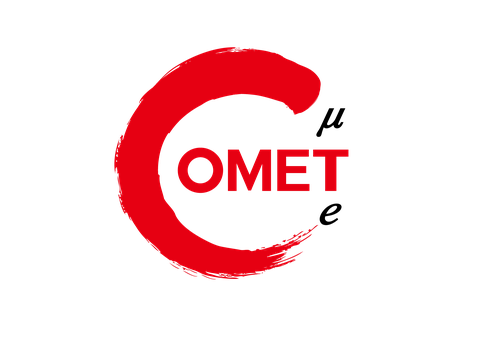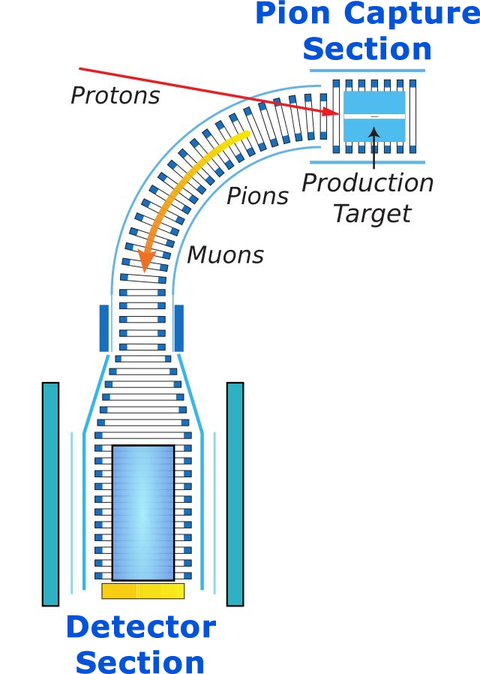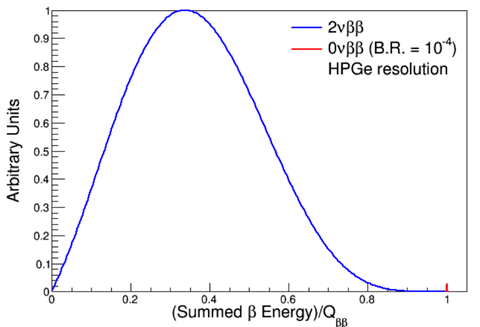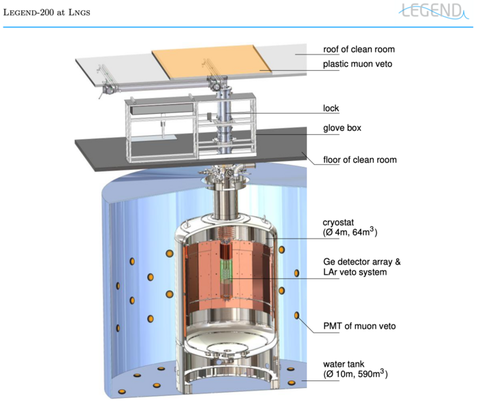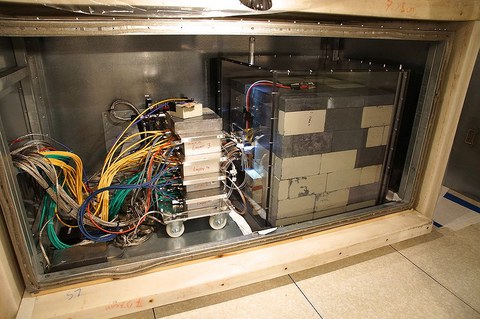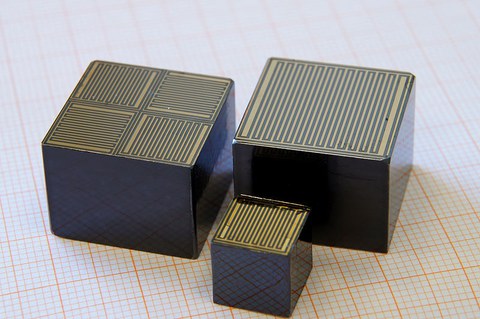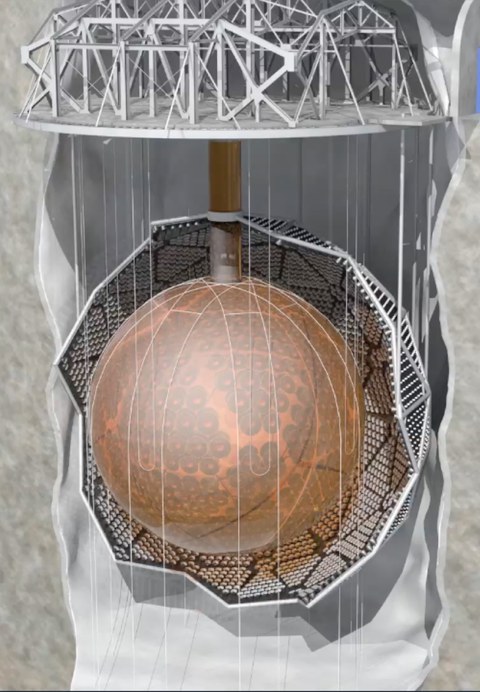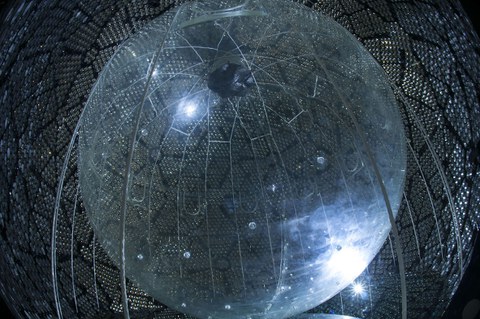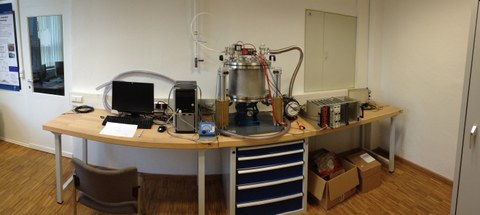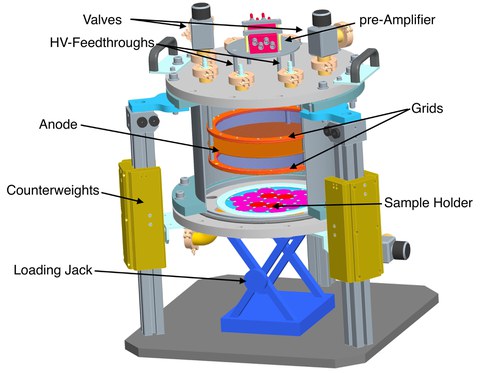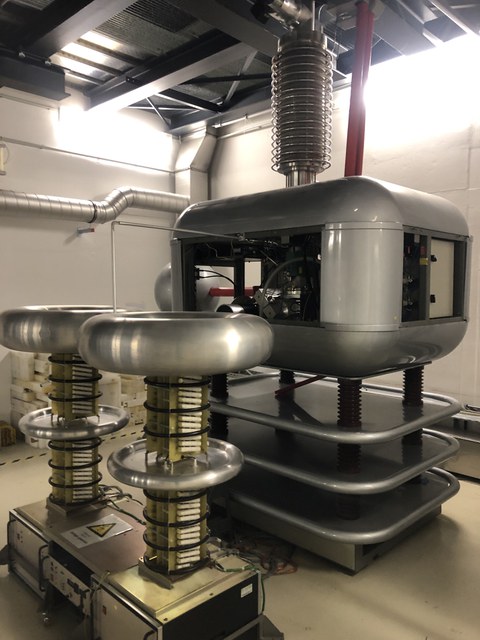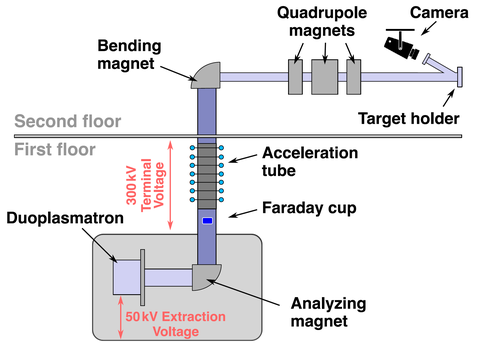Our Experiments
The COMET experiment at J-PARC in Japan will search for charged lepton flavor violation
by measuring the rate of neutrinoless transition of muons to electrons in the surrounding of atomic nuclei. Because this process is highly suppressed in the Standard Model it represents an excellent candidate to search for new physics and to confirm or constrain many new theories. The experiment will be carried out using a two-staged approach. Phase-I of the experiment is aiming at a signal sensitivity of 3.1 × 10−15, which is a factor of about 100 better than the current experimental limit.
The experiment starts by shooting a high energy pulsed proton beam at a stationary graphite target. A variety of different particles like protons, neutrons and pions are produced in the collision. The negatively charged pions are collected and send along a c-shape formed beamline to separate them from background. While traveling along the beamline they decay into muons which are subsequently stopped in the so-called muon stopping target. A detector system consisting of a cylindrical drift chamber, tigger hodoscopes and a high purity germanium detector is used to monitor the rate of the electron signal as well as the stopped muon rate.
Here at TU Dresden, the main research focus lies on the muon stopping target. For this purpose, a powerful Geant4 computer simulation was developed and a mock-up of the stopping target was designed and built. With these tools, one can study different properties like target shapes or the number of muons stopped versus background in the detector systems. The goal is to optimize the muon target itself and to provide a precise method to obtain the number of stopped muons for the upcoming Phase-I measurements.
For more details you can check the official homepage: http://comet.kek.jp/
Neutrino oscillations have established that neutrinos are massive. However, neutrino oscillations are only sensitive to the mass squared differences of the neutrino mass eigenstates.
Neutrinoless double beta decay, in contrast, can yield information on the absolute neutrino mass scale. This decay also violates lepton number conservation which is possible only if neutrinos are their own anti-particles (so-called Majorana particles). The experimental observation of such fundamental particle – anti-particle symmetry would corroborate theoretical models which explain the smallness of neutrino masses and would shed light on the mechanism generating the present matter dominance of the Universe.
In the proposed neutrinoless double beta decay (A, Z) → (A, Z+2) + 2e-, differing in two missing anti-electron neoutrinos from the SM 2νββ process, the reaction energy Q is equal to the sum energy of the two electrons. This is the prime signature for 0νββ decay. It is expected to be very rare, so a good background reduction is needed.
The Large Enriched GErmanium Neutrino Detector array (LEGEND) is searching for the neutrinoles double beta decay of 76Ge. It is the successor experiment of GERDA and MAJORANA using the lab infrastructure of GERDA. Ge detectors from both predecessor experiments are reused and new ones are fabricated. The experiment is located at the Laboratori Nazionali del Gran Sasso, INFN, Italy. 1400 meters of rock are shielding this underground lab against cosmic rays. Moreover, the flux of neutrons in the underground halls is about thousand times less than on the surface due to the very small amount of uranium and thorium of the Dolomite calcareous rock of the mountain.
Bare Ge detectors enriched in 76Ge to at least 87% are both source and detector. They are operated inside high purity liquid argon which serves as cryostat and veto. This is surrounded by a water tank. Muon detectors on top of the water tank provide an additional veto for cosmic muons.
GERDA achieved a background index of 10−3 cts/(keV·kg·yr). Up to an exposure of 100 kg·yr it can therefore be claimed background-free. It has set a lower limit for the 0νββ halflife of 76Ge of 1.1 x1026 years (90% C.L.). It is planned to increase the detector mass stepwise, first to 200 kg. The long-term goal is a ton-scale experiment. Further optimization of the shieldings is expected to reduce the background index accordingly to remain background-free. This way the half life sensitivity is going to be expanded to 1028 years and become sensitive to Majorana neutrino masses of 1 meV.
work in progress 25/07/25
The COBRA (Cadmium Zinc Telluride 0-Neutrino Double Beta Research Apparatus) experiment uses CdZnTe semiconductor detectors to search for neutrinoless double beta decay. It is being operated at the underground laboratory Laboratori Nazionali del Gran Sasso (LNGS) in Italy. The experiment employs "detector = source" technique. As a semiconductor material, CdZnTe offers low radioactivity levels as well as good energy resolution. It contains several double beta decay candidates. The most promising one is 116Cd with a Q-value of 2.814 MeV, which lies above the prominent γ-line from natural background.
The first stage of experiment is the COBRA demonstrator, which consists of 64 coplanar -grid (CPG) detectors arranged in four layers of 4×4 crystals with a size of 1×1×1 cm3 each. The complete data set is being analyzed to understand different background components and to extract half-life limits on the isotopes of interest in the detector material. Recently, the setup was upgraded with nine 6 cm3 CdZnTe detectors to the extended demonstrator (XDEM). XDEM detectors use a novel electrode design, quad coplanar grids (qCPG) surrounded by guard ring, which can improve detector’s performance as well as reduce the backgrounds identified in the demonstrator phase.
Together with other improvements, XDEM is expected to achieve better performance. Currently, XDEM is dedicated to 2νββ of 116Cd measurements. We are mainly focusing on the pulse shape analysis, simulations and lab measurements to have a better understanding of our detectors and setup.
For more details, please visit COBRA website: https://www.cobra-experiment.org
The SNO+ experiment is the successor of the Nobel Prize honored experiment Sudbury Neutrino Observatory (SNO) and uses the infrastructure of SNO. The neutrino detector consits of an acrylic sphere (called acrylic vessel, AV) with 12 m diameter observed by more than 9300 photomultiplier tubes (PMTs). These PMTs are mounted on a support structure with 17.8 m diameter. Two rope systems are installed to stabilise the AV. The volume between the AV and the PMTs as well as the cavity, the detector is built in, is filled with ultra pure water. SNO+ belongs to the SNOLab underground laboratory located 2 km deep (around 6000 m.w.e.) in an active nickel mine near Sudbury, Ontario, Canada.
In opposite to SNO, the AV is filled with the liquid scintillator linear alkyl-benzene (LAB) for SNO+. Among others of our experiments, the main goal of SNO+ experiment is the search for the neutrinoless double beta decay (0νββ). The nuclide used in SNO+ is the tellurium isotope 130Te. To reach this goal, the LAB in the AV is doped with more than 1.3 t natural tellurium in a first stage.
SNO+ is also able to measure solar, geo-, reactor- and Supernova-neutrinos.
More detailed information can be found on the SNO+ website.
The Institute of Nuclear and Particle Physics (IKTP) houses the worlds lowest background alpha detector. This gridded ionisation chamber was specially designed at Helmholtz Zentrum Dresden-Rossendorf (HZDR) to measure signal rates well below 10 counts per day. The Frisch-Grid design is used to greatly improve the energy resolution of the ionisation chamber. The Shockley-Ramo theorem is combined with state of the art Monte Carlo to simulate the ionisation chamber down to the pulse shape level. A paper on the design and characterisation of the ionisation chamber has been published (DOI:10.1016/j.nima.2016.01.033). Several successful measurement campaigns have been performed using this device.
A new half-life of 1.079(26) · 1011 years for the geo-chronometer 147Sm has been measured and published (DOI:10.1103/PhysRevC.95.034618). The samples were made and characterised at the Leibniz Institute for Solid State and Material Research Dresden. Laser ablation was used to deposit natural samarium on silicon under ultra high vacuum. The samples were made in a range from 31 nm to 822 nm to investigate systematical effects.
A consistent half-life of 4.97(16) · 1011 years has been measured and published (DOI:10.1016/j.physletb.2017.02.052) for the cosmo-chronometer 190Pt. The natural platinum samples were produced at Transport Phenomena in Nanostructures centrum HZDR. The total thickness was in the range of 400 nm. The isotopic abundance of 190Pt was measured to be 0.01125(21) % at Isotope Climatology Laboratory (IKER) at Atmoki using inductively coupled plasma mass spectrometry (ICP-MS).
One of the vital p-process cross sections important for nuclear astrophysics has been remeasured and published (DOI:10.1103/PhysRevC.102.045811). The samples were produced a the University of Cologne, Institute for Nuclear Physics. The 144Sm enriched samples were activated at the Physikalisch-Technische Bundesanstalt in Braunschweig with Rutherford Backscattering Spectrometry (RBS) performed at the RUBION facility of the Ruhr-Universität Bochum, Germany. The work showed that there is a steeper increase of the astrophysical S-factor towards lower energies.
work in progress ... 25/07/25
Our working group operates the most powerful DT neutron source in Europe, delivering neutron fluxes of up to 10¹² neutrons per second. The accelerator facility is based on a Duoplasmatron ion source providing a deuterium beam with energies of up to 350 keV and beam currents of several milliamperes. This beam is impinging a solid tritiated target, which produces monoenergetic 14.1 MeV neutrons via the ³H(d,n)⁴He reaction. Furthermore, the irradiation of a deuterated target is also possible, enabling the generation of monoenergetic neutrons with 2.5 MeV via the ²H(d,n)³He reaction. In addition to the D+T and D+D operation, the facility can also deliver proton beams of the same energy and similar currents. In summary, after shutting down the nuclear fission plants in Germany, the DT generator of TU Dresden is currently one of the most intense neutron source in Germany and therefore plays a key role in advancing research in nuclear physics, fusion reactor technology, and material sciences. The main applications include:
- Fusion reactor research: Our DT neutron field replicates the conditions expected in future D+T fusion reactors. This makes the facility uniquely suited for testing radiation hardness of components and electronics intended for operation near the fusion plasmas.
- Neutron activation studies: Activated samples can be transported within 11s to HPGe counting stations via a pneumatic tube system in order to investigate short-living nuclei and neutron-induced cross sections.
- Nuclear astrophysics: Planned upgrades will expand the facility's capabilities for astrophysical studies using high-intensity proton and deuterium beams at a dedicated, second beam line. This will enable investigations of reactions relevant for stellar nucleosynthesis and Big Bang nucleosynthesis.
The reduced background in underground laboratories enables the direct study of nuclear reactions with low cross sections at astrophysical relevant energies. The new shallow-underground accelerator laboratory Dresden Felsenkeller is shielded from cosmic rays by 110 m water equivalent of rock. The facility comprises a 5 MV Pelletron accelerator and two bunkers, one for in-beam experiments and one for activation studies. The latter houses a 150% HPGe detector shielded with ultra-low background copper and lead together with active anti-muon plastic scintillation veto detectors. The accelerator is expected to provide 50 μA of 0.3 to 3.0 MeV hydrogen, 0.3 to 5.0 MeV helium and 1.0 to 15.0 MeV carbon beams generated in an external sputter ion source or in an internal ion source on the high voltage terminal. The two available target setups will be a well-established solid-target chamber or a currently designed gas target that can be operated as an extended gas chamber or as a gas jet. The scientific program addresses the 3He(α,γ)7Be, a key reaction in both Big-Bang nucleosynthesis and p-p-chain hydrogen burning in stars. Another reaction of interest is 12C(α,γ)16O, the “holy grail” in nuclear astrophysics that determines the carbon to oxygen ratio and the nucleosynthesis of heavier elements in stars.
For more information, you can check the Felsenkeller website.

